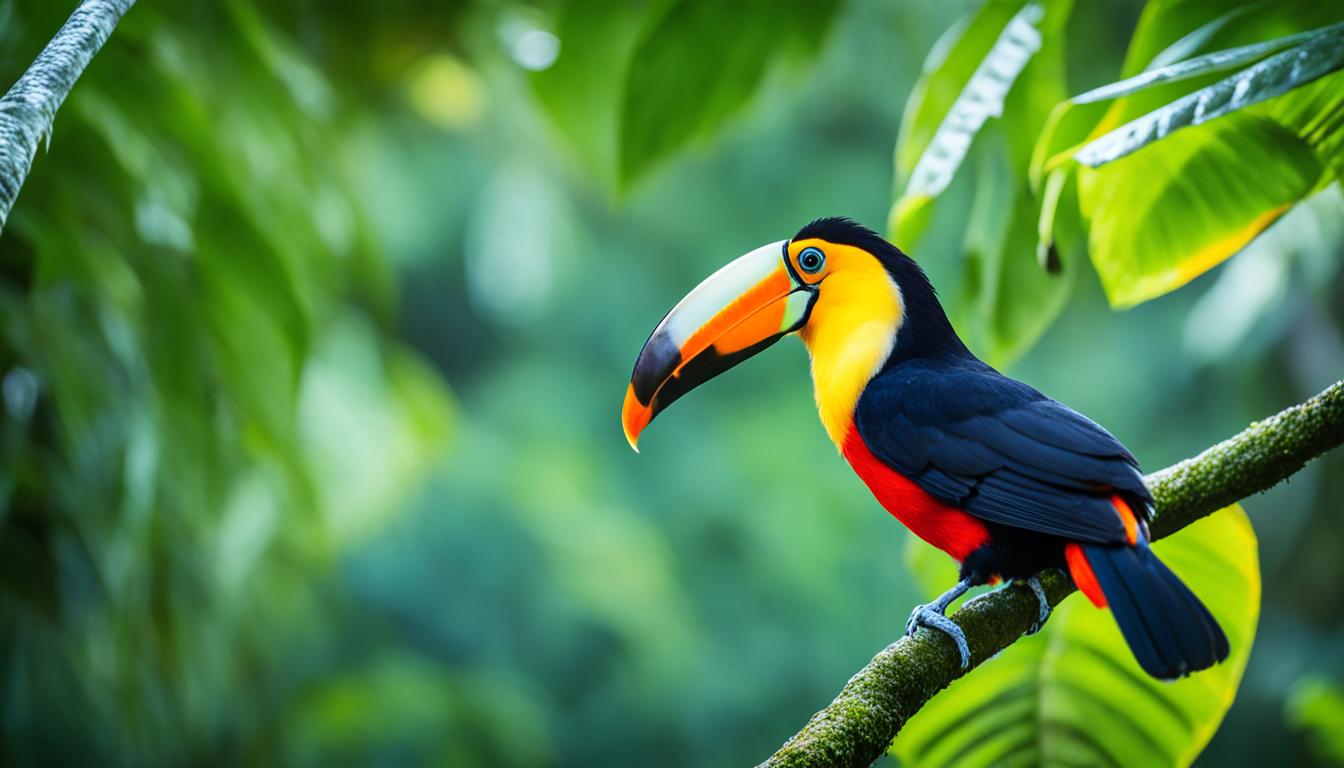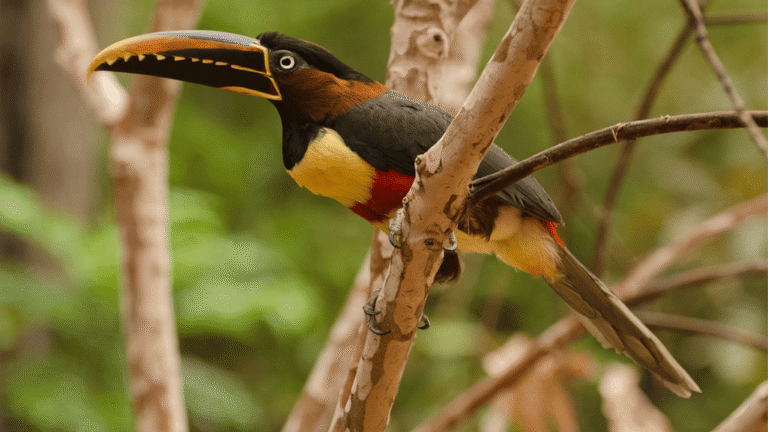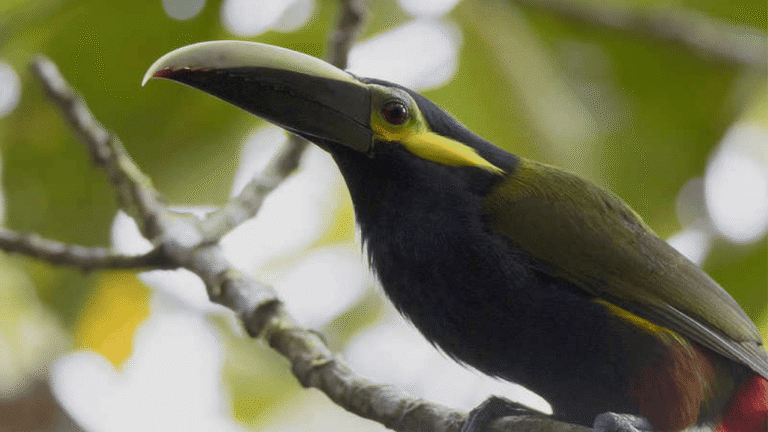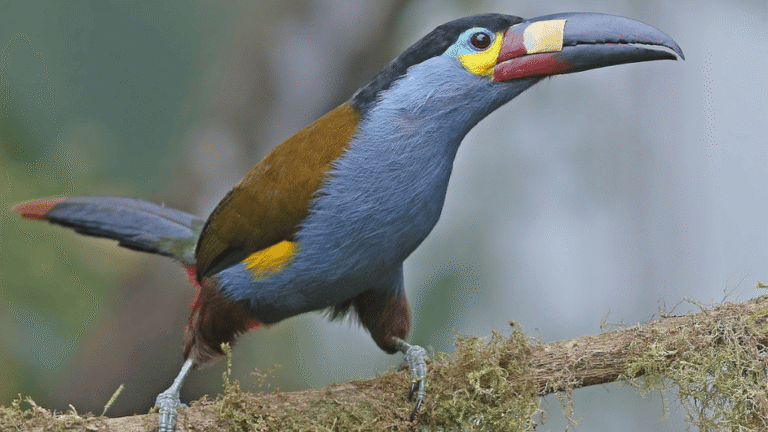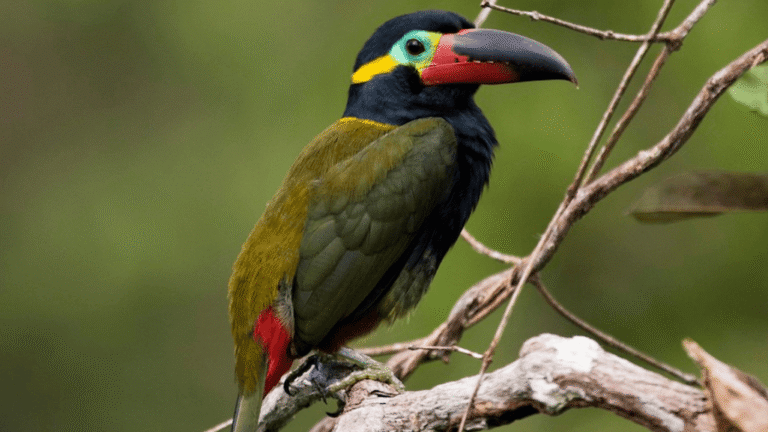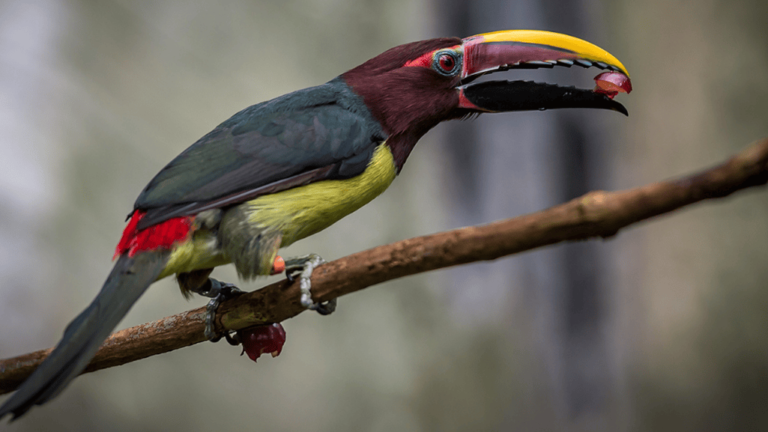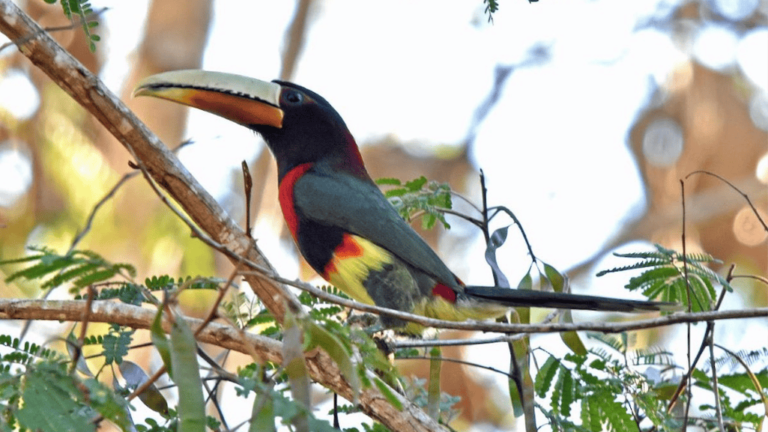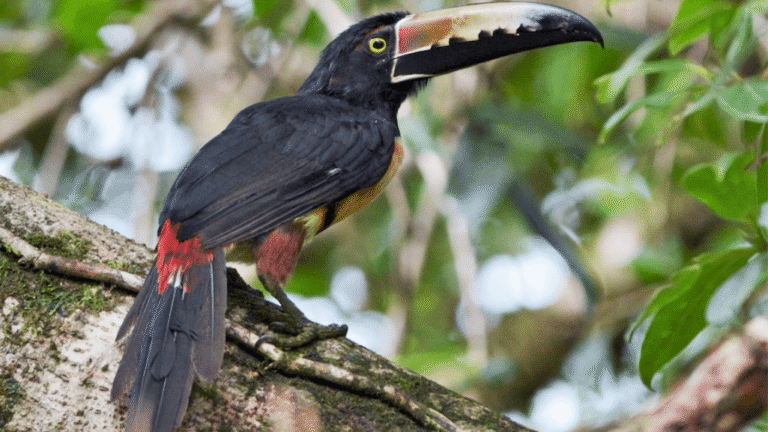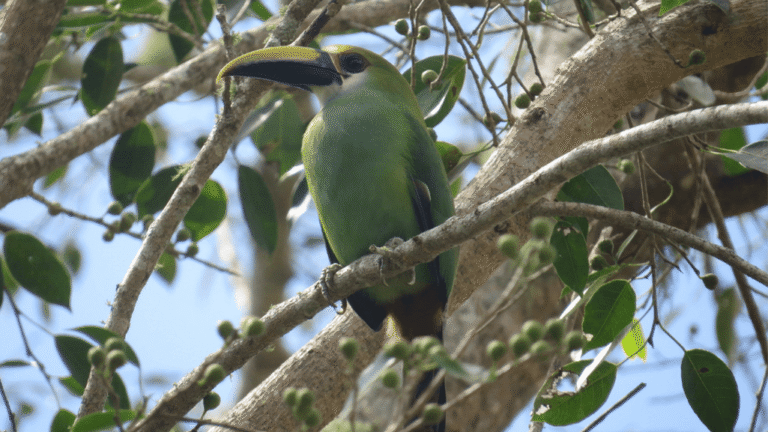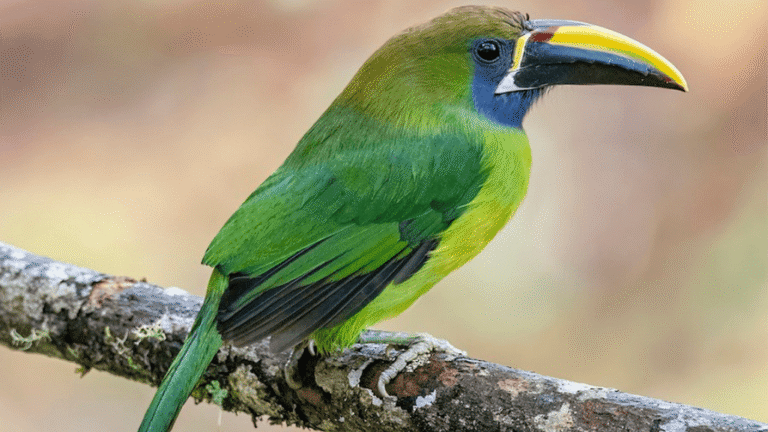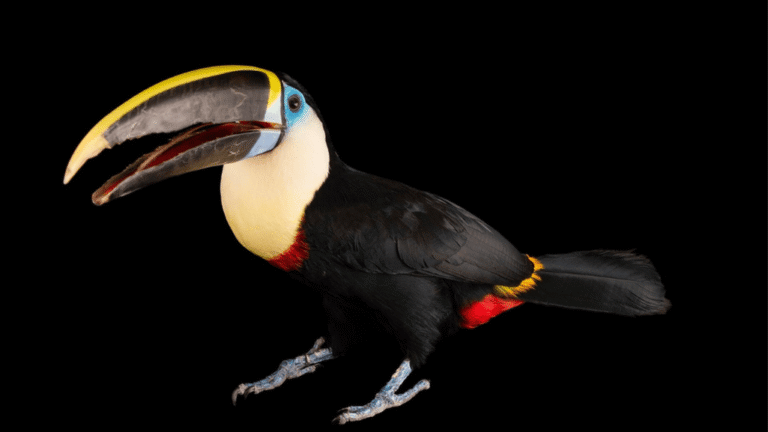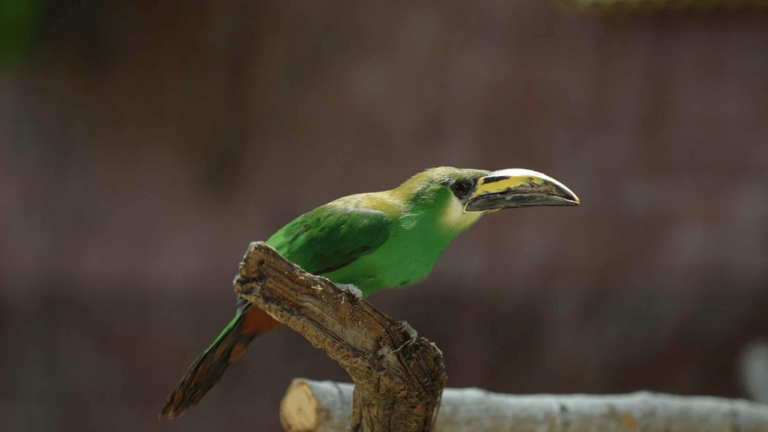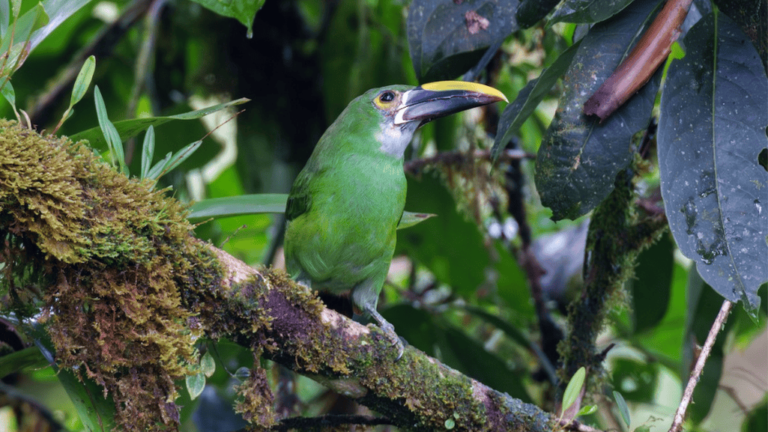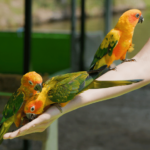Discover the Vibrant Toco Toucan | Fun Facts & Care The Toco Toucan, native to South America, is an exotic bird species known for its striking appearance and colorful beak. As the largest toucan species, measuring 63.5 cm (25 in.) in length, it captivates bird enthusiasts and nature lovers alike. With its vibrant plumage and impressive beak size, the Toco Toucan is a fascinating creature that thrives in the rainforest habitat.
Key Takeaways:
- The Toco Toucan is the largest toucan species, measuring 63.5 cm (25 in.) in length.
- It is native to South America and can be found in various habitats, including tropical forests and shrublands.
- The Toco Toucan is known for its large, colorful beak, measuring about 19 cm (8 in.) in length.
- They primarily feed on fruit but also have a flat tongue that helps them catch insects, frogs, and reptiles.
- Toco Toucans are not considered threatened and there are no specific conservation efforts for the species.
Physical Appearance and Habitat
The Toco Toucan, known for its striking physical characteristics, resides in the lush rainforests of South America. This iconic bird measures 55-65 cm (22-26 inches) in length and features a captivating black to dark bluish plumage, adorned with a contrasting white throat, accentuating its colorful beauty. However, what truly sets the Toco Toucan apart is its distinct beak.
The beak of the Toco Toucan is a remarkable feature that accounts for approximately one-third of its total length. Vibrantly colored in bright orange, the beak measures a noteworthy 8 inches long. Composed of lightweight keratin and containing air pockets, this massive beak allows the toucan to perform various functions, including obtaining food, regulating body temperature, and attracting potential mates.
The Toco Toucan possesses round eyes bordered with blue and orange skin, enhancing its charismatic appearance. Although the toucan’s wings are not adapted for long continuous flight, it showcases agile and precise movements while hopping or walking across tree branches. Its tail, measuring 14.1-17.9 cm (5.6-7.0 inches), provides balance and stability during these acrobatic feats.
With its stunning physical attributes perfectly adapted to its rainforest habitat, the Toco Toucan dwells high above the dense canopy of trees. Living in pairs or small flocks, these vibrant birds often make use of tree hollows as nests. This strategic choice offers them protection and a safe haven to raise their young amidst their cherished environment.
| Physical Characteristics | Size | Beak | Plumage | Wings | Eyes | Tail |
|---|---|---|---|---|---|---|
| Toco Toucan | 55-65 cm (22-26 inches) | Bright orange, 8 inches long | Black to dark bluish with a white throat | Not adapted for long continuous flight | Round, bordered with blue and orange skin | 14.1-17.9 cm (5.6-7.0 inches) |
Behavior and Communication
Toco toucans are highly social birds, often found in pairs or small flocks of around six members. They exhibit fascinating behaviors that contribute to their unique charm and intriguing nature.
Mutual Grooming: Toucans engage in mutual grooming, a bonding behavior in which they use their bills to clean each other’s bodies. This behavior helps to strengthen social bonds within the group.
Mobility and Feeding: Toco toucans navigate their habitat by hopping or walking across tree branches. This movement allows them to reach their food sources, which primarily consist of fruits. Their large beaks and flat tongues assist them in catching insects, frogs, and reptiles as well.
Vocalizations: Toucans are known for their unmistakable and loud vocalizations. Their calls are husky and can be heard from a distance of up to half a mile. Often compared to the croaking of frogs, these vocalizations serve as a means of communication to establish territories and attract potential mates.
Unique Flying Style: Toco toucans exhibit a distinctive flying style characterized by alternating between gliding and rapid flapping of their wings. This method allows them to cover short distances efficiently while conserving energy.
Behavior and Communication
| Behavior | Description |
|---|---|
| Mutual Grooming | Toco toucans engage in mutual grooming using their bills to clean each other’s bodies, strengthening social bonds. |
| Mobility and Feeding | Toucans hop or walk across tree branches to reach their food sources, primarily fruits, insects, frogs, and reptiles. |
| Vocalizations | Toucans have loud vocalizations that can be heard from up to half a mile away, serving as a means of communication. |
| Unique Flying Style | Toucans alternate between gliding and rapid wing flapping, allowing them to cover short distances efficiently. |
Reproduction and Life Cycle

Toco toucans are fascinating creatures when it comes to reproduction and their life cycle. These vibrant birds are monogamous and breed once a year during the spring. Mating for toco toucans involves a captivating courtship ritual where the male and female toss fruit to each other, strengthening their bond.
When it comes to nesting, toco toucans use hollows that are often acquired from other bird species like woodpeckers. They carefully select these cavities as their preferred nesting sites, ensuring the safety and protection of their eggs and young.
The female toco toucan lays a clutch of 2-5 eggs, which both parents take turns incubating. The incubation period lasts for about 16-20 days, during which the parents diligently care for the developing eggs.
After hatching, both parents continue to provide dedicated parental care to their young for approximately 6-8 weeks. These attentive parents ensure the well-being and survival of their offspring, offering nourishment, protection, and guidance as the young toucans grow.
As the toco toucan chicks develop, they inherit their parents’ distinctive beak. However, the beak size is initially smaller, gradually growing over time as the young birds mature.
Toucans reach sexual maturity at around 3-4 years of age. In their natural habitats, these colorful birds have an average lifespan of 20 years, although some individuals have been known to live up to 26 years.
Diet and Predators

The Toco Toucan has a diverse diet that includes both fruits and small prey. Its primary source of food is fruit, which makes up the majority of its diet. The toucan uses its large beak to pluck and consume a variety of fruits that would otherwise be out of reach for smaller species. This includes fruits such as berries, figs, and even palm fruits. The bright colors and strong scent of these fruits attract the toucan’s attention, making them an irresistible treat.
In addition to fruits, the Toco Toucan also feeds on insects, lizards, small birds, and occasionally eggs. Its diet is supplemented by these protein-rich sources, which are especially important during the breeding season when the toucans require additional energy to raise their young.
When hunting for insects, the Toco Toucan uses its powerful beak to snatch prey out of the air or from tree branches. It can also use its beak to probe crevices and extract hidden insects. This versatile feeding method allows the toucan to exploit a wide range of food sources in its habitat.
Despite its size and formidable beak, the Toco Toucan does have predators. Some of the main predators of this species include jaguars, snakes, coatis, and eagles. These predators pose a threat to both adult toucans and their vulnerable young.
Conclusion
The Toco Toucan, with its vibrant appearance and fascinating habits, holds a special place in South America’s rich biodiversity. Although it is currently listed as “Least Concern” by the IUCN and BirdLife International, conservation efforts are crucial to ensure its long-term survival.
Despite not being considered threatened, the Toco Toucan’s overall population is declining. Its striking presence and cultural significance make it a cherished symbol associated with the spirit world. From totem poles to popular brand mascots like Kellogg’s Fruit Loops, the Toco Toucan is an icon that captivates many.
To secure a future for these magnificent birds, protecting their rainforest habitat is paramount. By preserving the delicate balance of the ecosystem and raising awareness about their conservation status, we can help safeguard the Toco Toucan and its fascinating existence for generations to come.
Frequently Asked Questions
What is the Toco Toucan?
The Toco Toucan is an exotic bird species native to South America. It is the largest toucan species, known for its bright colors and large beak.
How big is the Toco Toucan?
The Toco Toucan measures about 63.5 cm (25 inches) in length, making it the largest toucan species.
Where does the Toco Toucan live?
The Toco Toucan can be found in various habitats in South America, including tropical forests, savannas, and shrublands.
What is unique about the Toco Toucan’s beak?
The Toco Toucan’s most recognizable trait is its large, colorful beak, which measures about 19 cm (8 inches) in length and accounts for one-third of its total length. The beak is made of lightweight keratin protein and helps regulate the bird’s body temperature.
What do Toco Toucans eat?
Toco Toucans mainly feed on fruit, but they also have a flat tongue that helps them catch insects, frogs, and reptiles.
Are Toco Toucans endangered?
The Toco Toucan is not considered threatened, but its overall numbers are declining. There are no specific conservation efforts for the species.
How do Toco Toucans communicate?
Toco Toucans communicate through a variety of sounds, including loud vocalizations, bill rattling, and bill clacking.
How do Toco Toucans reproduce?
Toco Toucans are monogamous birds that breed once a year. The breeding season occurs in the spring, and the male and female engage in a courtship ritual that involves tossing fruit to each other. They nest in hollows, often using cavities created by woodpeckers.
What do Toco Toucans feed their young?
Both parents of Toco Toucans take turns incubating the 2-5 eggs for 16-20 days. After hatching, they continue to care for the young toucans until they are about 6-8 weeks old.
What is the lifespan of a Toco Toucan?
In the wild, Toco Toucans have an average lifespan of 20 years, but it can extend up to 26 years.
What are the predators of Toco Toucans?
Predators of Toco Toucans include jaguars, snakes, coatis, and eagles.
Why are Toco Toucans important?
Toco Toucans have a strong cultural significance in South America and play a vital role in their rainforest habitat. Protecting their habitat through conservation efforts can contribute to their long-term survival.

